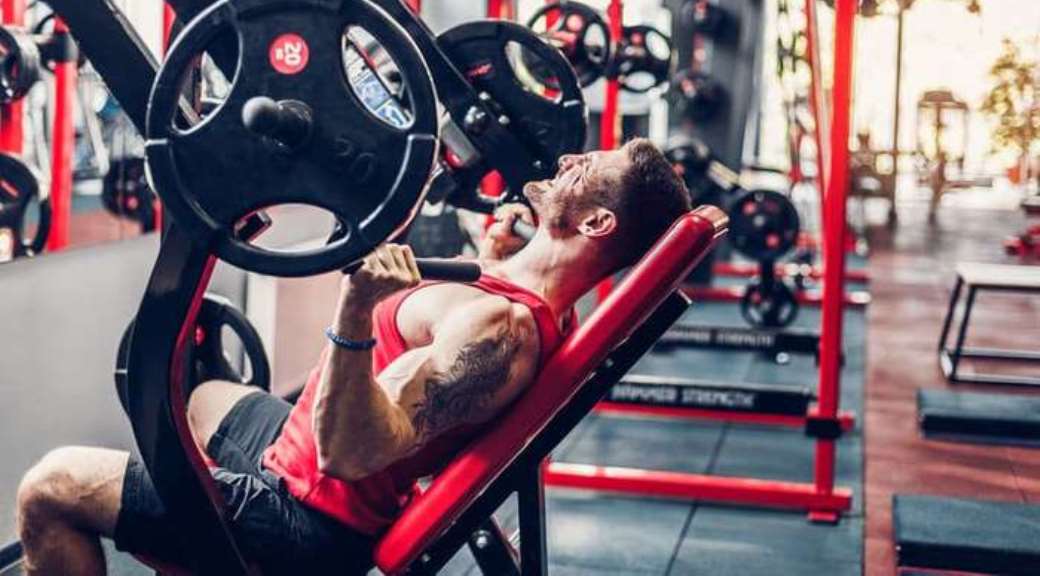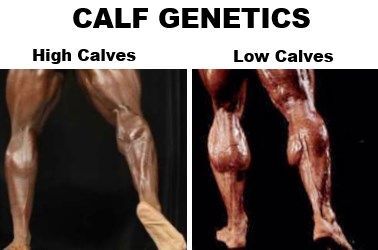
Variety and pumping: what science says
Professional experts from the bodybuilding gloss have been arguing for decades that for the full development of muscles, it is necessary to work out different parts of the muscle with different exercises. For example, the program should include exercises for raising the” peak “of the biceps, and for giving the biceps “thickness”.
And a number of trainers objected: a few multi-joint exercises – that’s all you need for growth. Regular increase of working weights in the squat with a barbell, bench press, deadlift and deadlift in the tilt is the most effective way to make the muscles grow.
So who is right?
Let’s figure it out.
Muscles and Magnets
Back in the 90s of the last century, a Swedish scientist named Per Tesch conducted an experiment on a group of advanced bodybuilders, “looking inside” their muscles using magnetic resonance imaging (MRI). He found that even small variations in the technique shift the load on different regions of the muscles that carry out the movement.
For example, if you take a barbell with a wide grip in the flexion of the arms,then the short head of the biceps works more than the long one. If you perform this exercise on an inclined bench, then the load is distributed between the bundles approximately equally.
In addition to MRI, scientists used electromyography (EMG) to measure the electrical activity of muscle fibers during various exercises.
There are two ways to conduct an EMG study:
placing the electrodes on the skin surface directly above the muscles,
inserting thin wire or needle electrodes into the muscle abdomen itself.
EMG allows you to measure regional muscle activity when varying exercises or even when making small changes (grip, stance, etc.).
In one study, American scientists used EMG to measure the activation of the pectoral and deltoid muscles when performing bench presses with different angles of inclination . They found that the upper bundles of the pectorals and the anterior bundles of the deltoids are more active in the bench press on an inclined bench (head up) compared to the bench press on a horizontal bench.
In another study, we compared the activation of the muscles of the posterior surface of the thigh in isolation and multi-joint exercises. It was found that isolation activates certain regions much more strongly .
“When performing leg flexion, the activation of the lower part of the biceps femoris muscle was about 170% higher, the lower part of the semi – tendon muscle was about 65% higher (compared to the deadlift on straight legs)”,- says the author of the study Brad Schonfeld.
The best way to get muscles is to go on steroids. The full range can be found at https://itsteroids.it/categorie/iniezione-di-steroidi/
Variety of exercises and regional hypertrophy
So, a number of studies have revealed that different exercises, as well as different variants of grip, stance and body position, have different effects on regional muscle activation.
But does this affect hypertrophy?
In other words, do differences in short-term regional muscle activity lead to a long-term increase in muscle mass in this particular region?
The authors of several works have tried to answer this question. And their answer is an unequivocal “yes”.
Japanese researchers found that after a 12-week training program, which included performing arm extensions with a dumbbell lying down three times a week, the greatest growth was observed in the part of the triceps that was most active in this exercise .
The same group of authors conducted a 12-week experiment with a dumbbell bench press – again, the maximum hypertrophy was observed in those regions of the muscles where the greatest activation was recorded .
Leg extension performed three times a week for three months leads to faster growth of the rectus femoris muscle compared to other muscles that make up the quadriceps .
Moreover – a training program that includes several leg exercises (squat, lunge, leg press) led to hypertrophy of all parts of the quadriceps, which the basic program containing only squats could not provide .
Direct comparison of programs
For nine weeks, Brazilian researchers observed two groups of subjects who trained three times a week and worked out the whole body at each workout .
Everyone performed the same number of sets and repetitions, but there was a nuance: the first group constantly practiced the same exercises, and the second group’s exercises changed at each training session during the week.
Permanent program
Bench press
Traction of the upper block
Leg press
Leg flexion
Bicep Lift
Extension of the arms for the triceps
Alternating program
Training Session 1
Bench press
Traction of the upper block
Leg press
Leg flexion
Bicep Lift
Extension of the arms for the triceps
Training 2
Bench press on an inclined bench (head up)
Traction of the upper block by the head
Semi-squat
Bending the legs while sitting
Bending the arms on the music stand
Extension of the arms on the block while sitting
Training 3
Barbell press on an inclined bench (head down)
Traction of the upper block with a narrow grip
Gakk-squat
Flexion of the leg (unilateral) while sitting
Bending the arms on an inclined bench
Extension of the arms in a tilt
The change in muscle thickness was assessed using ultrasound scanning, analyzing the quadriceps, biceps and triceps in several areas: both proximal (the parts of the muscle closest to the center) and distal (the parts of the muscle farthest from the center), and in the middle between them.
So who gained more weight?
The program, in which the exercises were alternated at each training session, led to a significant increase in muscle thickness in all 12 analyzed areas.
In the” fixed ” group, the results were not so outstanding. In particular, the increase in the thickness of the proximal section of the biceps, the proximal and middle sections of the lateral thigh muscle was almost twice lower than in the “varied” group.
EMG restrictions
But there is also bad news about other factors that affect the growth and final shape of the muscles.
Firstly, it makes sense to measure the degree of muscle activation only when comparing biomechanically similar movements, for example, pull-ups and pull-ups of the upper block, bench presses on horizontal and inclined benches, etc.
If different movements are compared, it is not always possible to determine with the help of EMG which exercise will stimulate hypertrophy more.
For example, in one study, scientists tried to find out what will make the glutes grow faster-a bridge or a squat? .
Another factor is genetics. We can’t change the shape of a particular muscle in any way.
The lucky ones born as bodybuilders have a relatively short muscular abdomen and longer tendons. And these parameters cannot be changed with the help of training.
With calf on the contrary: the short and high-placed abdomen of the muscle can not be stretched in any way by all possible options for lifting on the toe with different foot positions. Champions with outstanding calves simply have a shorter Achilles tendon and a long muscular abdomen, that is, there is more potential for growth.

Conclusion
It should be understood that in principle it is impossible to isolate any region of the muscle. The potential shape and size of each muscle is ultimately determined by our genes.
And yet, we can realize the inherent potential by using various exercises, as well as varying the width of the grip, the variant of the rack, the position of the body and other technical conditions in order to shift the maximum load to different areas of the muscle group.
Thus, training a muscle with several exercises is more effective than including only one exercise for a given group in the program.
